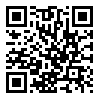year 6, Issue 23 (9-2007)
J. Med. Plants 2007, 6(23): 40-45 |
Back to browse issues page
Download citation:
BibTeX | RIS | EndNote | Medlars | ProCite | Reference Manager | RefWorks
Send citation to:



BibTeX | RIS | EndNote | Medlars | ProCite | Reference Manager | RefWorks
Send citation to:
Shariati Rad S, Nassiri Asl M, Zamansoltani F. Anticonvulsant Effects of Pasipay (Prepared from Passion Flower) by PTZ Model in the Mice. J. Med. Plants 2007; 6 (23) :40-45
URL: http://jmp.ir/article-1-586-en.html
URL: http://jmp.ir/article-1-586-en.html
1- Faculty of Medicine, Qazvin University of Medical Sciences
2- Department of Pharmacology, Faculty of Medicine, Qazvin University of Medical Sciences ,marjannassiriaslm@gmail.com
3- Department of Anatomy, Faculty of Medicine, Qazvin University of Medical Sciences
2- Department of Pharmacology, Faculty of Medicine, Qazvin University of Medical Sciences ,
3- Department of Anatomy, Faculty of Medicine, Qazvin University of Medical Sciences
Abstract: (7758 Views)
Background: Passion flower has shown antianxeity and sedative effects in human. Objective: In this study, anticonvulsant effects of hydroalcoholic extract of passiflora were studied. Methods: Anticonvulsant effects of Pasipay were examined by using pentylenetetrazole model (PTZ) on mice. In this research pasipay, diazepam, and normal saline were injected i.p. at doses (0.05-0.4 mg/kg), (0.5-1 mg/kg), (10 ml/kg) respectively and after 30 minutes, PTZ (90 mg/kg, i.p) was injected to these mice. For investigating the mechanism of pasipay, flumazenil (2 mg/kg, i.p) and naloxone (5 mg/kg, i.p) were also injected 5 minutes before pasipay. Results: An ED50 value of pasipay was 0.2 mg/kg (%95 CL: 0.119, 0.408). In this model, pasipay at the dose of 0.4 mg/kg prolonged the onset time of seizure and decreased the duration of seizures compared to control (p<0.001). In this dose the seizure and mortality protection was 100%. Flumazenil and naloxone could suppress anticonvulsant effects of pasipay. Conclusion: It seems that pasipay may be useful for treatment of absence seizure and these effects may be related to the effect of it on GABAergic and opioid systems.
Type of Study: Research |
Subject:
Pharmacology & Toxicology
Received: 2006/02/8 | Accepted: 2007/02/14 | Published: 2007/09/22
Received: 2006/02/8 | Accepted: 2007/02/14 | Published: 2007/09/22
Send email to the article author
| Rights and permissions | |
 |
This work is licensed under a Creative Commons Attribution-NonCommercial 4.0 International License. |







